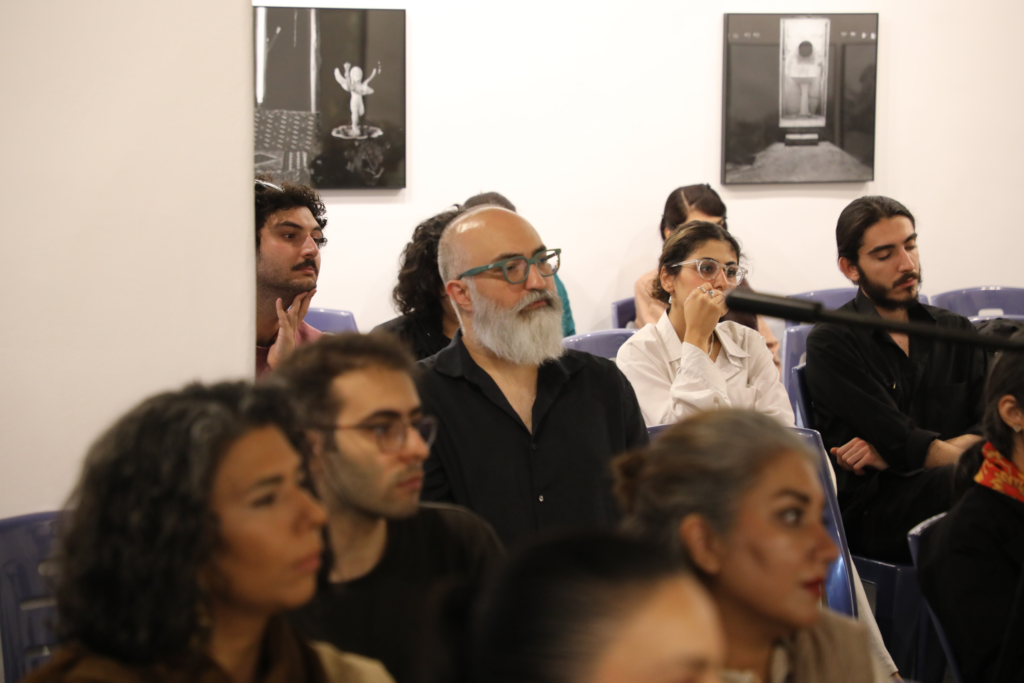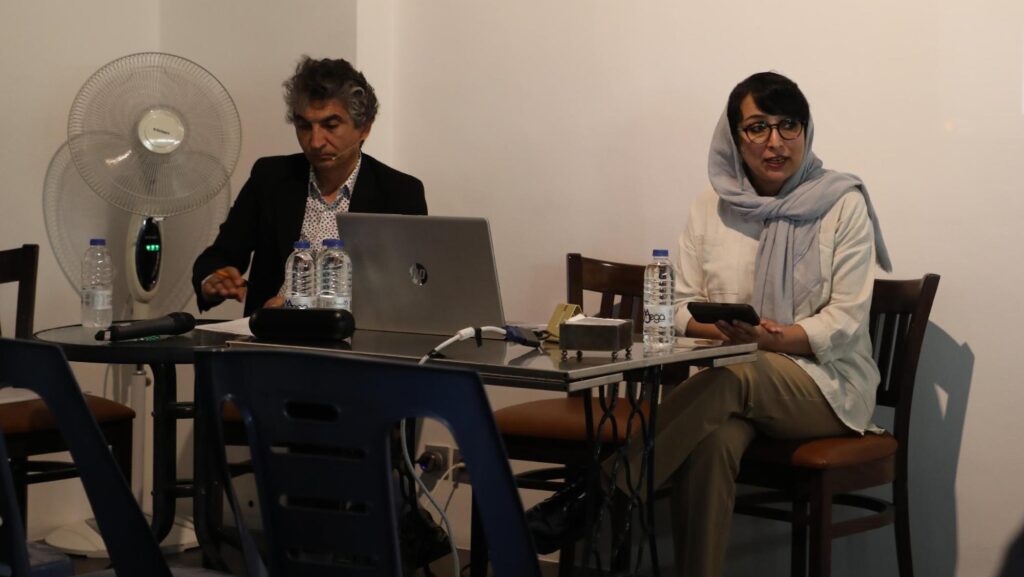A recent symposium at Aria Gallery, Tehran, brought thinkers together in a discussion about material thinking.
The “Contact Zone” symposium was held on June 20, 2024, from 10 a.m. to 6 p.m. at Aria Gallery in Tehran, focusing on post-humanist theory and its relation to art and specifically design. Managed by Elham Poryamehr and moderated by Rouhollah Shamsizadeh, the event featured speeches by ten professors from Iran and abroad, with nearly 40 participants.
Organized as part of the curatorial education course at Aria Academy, led by Elham Poryamehr and curated by Bita Shakari, Hoda Sargardan, and Narges Farahani, “Contact Zone” aims to engage audiences in reflecting on the narratives arising from the relationships between matter, the human and non-human body, artifacts, and society. The symposium’s approach is based on the post-humanist views of philosophers such as Donna Haraway and Bruno Latour, examining the value of human and non-human entities and the potential arising from their interaction with artifacts in Iranian culture.
Artifacts are defined as any form of “being” that comes into contact with the body. Considering the potential of artifacts to be shaped and to shape, questions arise: What understanding does Iranian culture have of the relationship between the body (human/non-human), matter, and artifacts? What deficiencies do technology and artifacts remedy in us today? How do artifacts challenge the boundaries of individual and social identity imposed on the body?
Introduction by Rouhollah Shamsizadeh
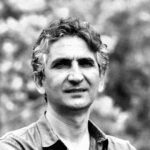 Dr. Rouhollah Shamsizadeh Maleki is an interdisciplinary artist, researcher, and lecturer in sculpture and contemporary jewelry. He holds a Ph.D. in Art Research and a Master’s in Painting from the University of Tehran, and a Bachelor’s in Sculpture from Tehran University of Art. Shamsizadeh spoke about Aria Gallery’s role in contemporary jewelry events, stating, “Aria facilitates dialogues, delving into visual arts, research, and interdisciplinary discussions. Since 2016, Aria has hosted five contemporary jewelry events, striving for a comprehensive view of design and preparing for Design Week. This has led to projects titled ‘Curatorial’ under the guidance of Elham Poryamehr.” He highlighted the key terms matter, making, body, and artifacts as central to the discussions at Aria Gallery, before introducing Elham Poryamehr.
Dr. Rouhollah Shamsizadeh Maleki is an interdisciplinary artist, researcher, and lecturer in sculpture and contemporary jewelry. He holds a Ph.D. in Art Research and a Master’s in Painting from the University of Tehran, and a Bachelor’s in Sculpture from Tehran University of Art. Shamsizadeh spoke about Aria Gallery’s role in contemporary jewelry events, stating, “Aria facilitates dialogues, delving into visual arts, research, and interdisciplinary discussions. Since 2016, Aria has hosted five contemporary jewelry events, striving for a comprehensive view of design and preparing for Design Week. This has led to projects titled ‘Curatorial’ under the guidance of Elham Poryamehr.” He highlighted the key terms matter, making, body, and artifacts as central to the discussions at Aria Gallery, before introducing Elham Poryamehr.
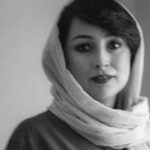 Dr. Elham Poryamehr is an artist, independent curator, writer, and lecturer based in Vancouver, Canada. She graduated from Tehran University of Art, holds a Ph.D. in Art Research from Alzahra University, and completed her postdoctoral studies in “Advanced Practices” at Goldsmiths, University of London. Her research focuses on curatorial knowledge, spectral infrastructures, and knowledge construction in social spaces.
Dr. Elham Poryamehr is an artist, independent curator, writer, and lecturer based in Vancouver, Canada. She graduated from Tehran University of Art, holds a Ph.D. in Art Research from Alzahra University, and completed her postdoctoral studies in “Advanced Practices” at Goldsmiths, University of London. Her research focuses on curatorial knowledge, spectral infrastructures, and knowledge construction in social spaces.
Poryamehr introduced post-humanist theories, emphasizing the interconnected existence of humans with other entities and materials in a network. She explained that in post-humanist design, the centrality of humans and their comfort is challenged. She outlined the symposium’s methodology, “Thinking Through Making,” as the core approach.
Panel 1: “Non-Human Narrative”
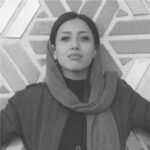 Narges Farahani is an artist, independent curator, and lecturer based in Tehran, specializing in ceramic arts. She highlighted the relationality of matter, discussing how its nature and destiny shape our world, influenced by Tim Ingold’s theory of “Thinking Through Making.” This panel invited participants to explore human and non-human interactions with a focus on clay.
Narges Farahani is an artist, independent curator, and lecturer based in Tehran, specializing in ceramic arts. She highlighted the relationality of matter, discussing how its nature and destiny shape our world, influenced by Tim Ingold’s theory of “Thinking Through Making.” This panel invited participants to explore human and non-human interactions with a focus on clay.
 Dr. Tim Ingold from London is a professor of Social Anthropology at the University of Aberdeen, known for his research on environmental perception and skilled practice. His talk, “Lying Down and Standing Up,” contrasted the formation of clay and sedimentary rocks with the process of pottery and mountain formation, exploring the tension between gravity and uprightness.
Dr. Tim Ingold from London is a professor of Social Anthropology at the University of Aberdeen, known for his research on environmental perception and skilled practice. His talk, “Lying Down and Standing Up,” contrasted the formation of clay and sedimentary rocks with the process of pottery and mountain formation, exploring the tension between gravity and uprightness.
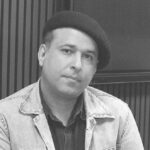 Mehdi Rafi, an author and translator in philosophy, art, and psychoanalysis, presented “Earth-Art: The Matter and Memory of Clay,” discussing how raw materials have active, non-human agency that should be examined beyond human intentionality.
Mehdi Rafi, an author and translator in philosophy, art, and psychoanalysis, presented “Earth-Art: The Matter and Memory of Clay,” discussing how raw materials have active, non-human agency that should be examined beyond human intentionality.
Panel 2: “Living Bodies in Transformation”
 Bita Shekari is an artist, designer, and independent curator based in Tehran, focusing on the interaction between human and non-human bodies (microorganisms). This panel, inspired by Bruno Latour’s post-humanist views, explored how these interactions, mediated by artifacts, challenge modern human-centric boundaries.
Bita Shekari is an artist, designer, and independent curator based in Tehran, focusing on the interaction between human and non-human bodies (microorganisms). This panel, inspired by Bruno Latour’s post-humanist views, explored how these interactions, mediated by artifacts, challenge modern human-centric boundaries.
 Rahman Sharifzadeh an assistant professor at the Iranian Research Institute for Science and Technology, discussed “Post-Humanism: Entanglement and Multiplicity in the Post-Human Era,” addressing the shift from human-centric dualisms to a focus on entanglements and multiplicities.
Rahman Sharifzadeh an assistant professor at the Iranian Research Institute for Science and Technology, discussed “Post-Humanism: Entanglement and Multiplicity in the Post-Human Era,” addressing the shift from human-centric dualisms to a focus on entanglements and multiplicities.
 Dr. Ali Ashrafi, a cognitive neuroscientist, shared insights on “The Microbiome: Invisible Friends,” emphasizing the significant role of microorganisms in our health and their potential for creative expression in art.
Dr. Ali Ashrafi, a cognitive neuroscientist, shared insights on “The Microbiome: Invisible Friends,” emphasizing the significant role of microorganisms in our health and their potential for creative expression in art.
Panel 3: “Absence, Cyborg, Abstraction”
 Hoda Sargordan is an architect, interior designer, and art director at Rishay 29 Gallery. Her talk, “Absence, Cyborg, Abstraction,” discussed the intertwining of human and machine forces, inspired by Donna Haraway’s cyborg theory, and questioned the future of memory and emotions in the post-human era.
Hoda Sargordan is an architect, interior designer, and art director at Rishay 29 Gallery. Her talk, “Absence, Cyborg, Abstraction,” discussed the intertwining of human and machine forces, inspired by Donna Haraway’s cyborg theory, and questioned the future of memory and emotions in the post-human era.
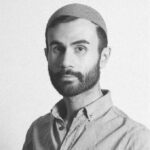 Sohrab Ahmadi, a researcher in semiotics and ancient Iranian languages, presented “Connections and Disconnections for Reproducing Signs,” exploring how artistic creation transforms personal suffering into aesthetic pieces, connecting the creator and audience through the process.
Sohrab Ahmadi, a researcher in semiotics and ancient Iranian languages, presented “Connections and Disconnections for Reproducing Signs,” exploring how artistic creation transforms personal suffering into aesthetic pieces, connecting the creator and audience through the process.
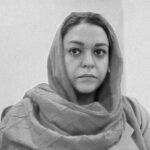 Dr. Shiva Alineghian, an anthropologist, discussed “The Cyborg Manifesto,” using Donna Haraway’s metaphor of the cyborg to challenge the binary of human/machine, emphasizing the liberating potential of cyborg existence.
Dr. Shiva Alineghian, an anthropologist, discussed “The Cyborg Manifesto,” using Donna Haraway’s metaphor of the cyborg to challenge the binary of human/machine, emphasizing the liberating potential of cyborg existence.
 Hamed Taheri Kia, a faculty member at the Institute for Cultural and Social Studies, addressed “The Relationship Between Iranians and Post-Humanism,” exploring how post-humanist views challenge historical dualisms and offer new interpretations of cultural and social phenomena in Iran.
Hamed Taheri Kia, a faculty member at the Institute for Cultural and Social Studies, addressed “The Relationship Between Iranians and Post-Humanism,” exploring how post-humanist views challenge historical dualisms and offer new interpretations of cultural and social phenomena in Iran.

